Paul Waring Golf Tips: 4 Tour Pro Drills To Help You Flush Your Irons
Iron play is the bread and butter of an amateur golfer's game, but how can we improve this key area? Paul Waring shares 4 drills to improve your ball-striking

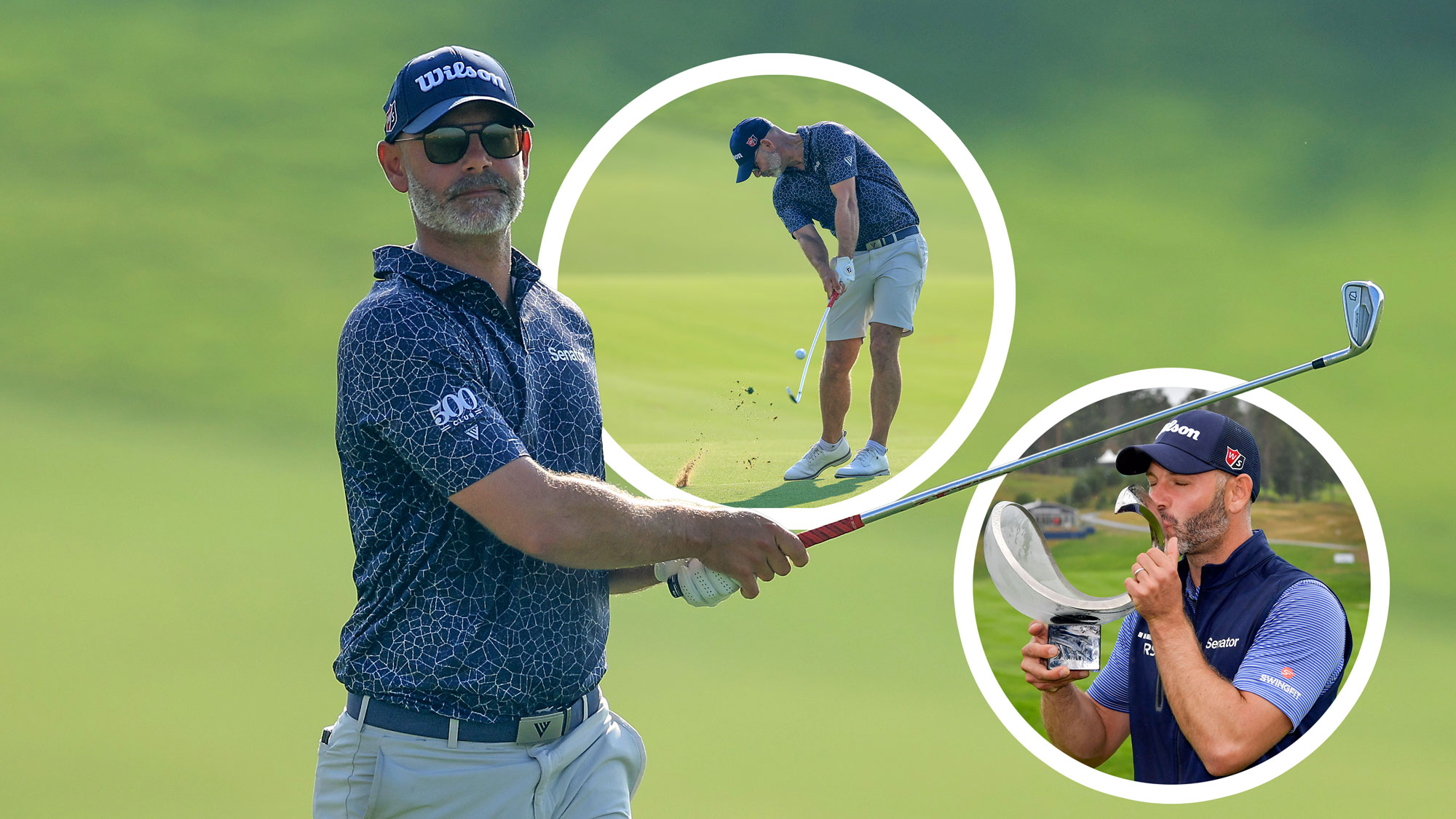
Improving your iron play is one of the fastest ways to reduce your handicap and play better golf, but often amateur golfers can get to hung up on how far they hit their irons instead of focusing on the technique.
Paul Waring, a DP World Tour winner at the 2018 Nordea Masters, has been on a very hot run of form at the end of the 2024 DP World Tour season, including when opening with an eight-under-par 64 at the Abu Dhabi HSBC Championship.
The Englishman ranks 16th on tour for Strokes Gained: Approach this season, so you will want to pay close attention as he shares four of his best drills to improve your ball striking with an iron in hand...
1. Shaft plane
We start with a simple drill that will immediately highlight if your shaft is on plane at the halfway stage in the backswing. We are going to use an alignment stick for this one, placing it in the ground just behind you to mirror the angle of the shaft at address.
Take the club back until your arms are parallel to the ground, and check the angle of the shaft in relation to the alignment stick. This will instantly tell you if your swing is too steep or shallow. If the angle matches, you are starting in a great position.
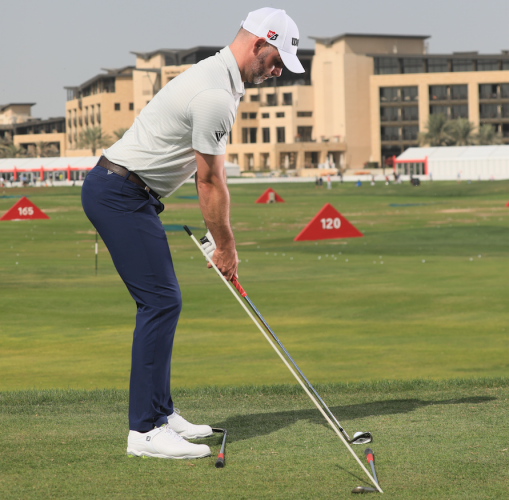
If your swing is too steep, you will get tucked up and likely end up with a bit of a gouge at the ball at impact. In contrast, if you are too shallow, you will potentially end up flicking at it with your hands to make contact with the ball through impact.
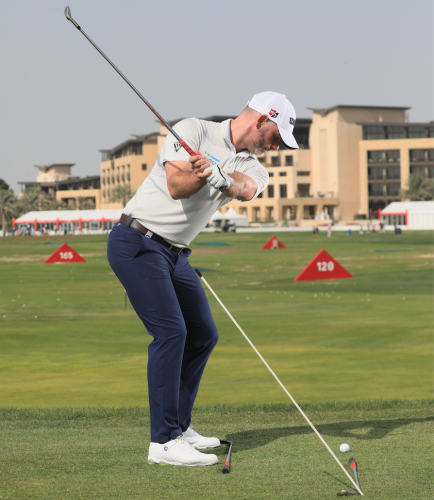
2. Hide the stick
Irons are designed to be hit down on to make the ball go up, but many amateurs try to help the ball up into the air.
Subscribe to the Golf Monthly newsletter to stay up to date with all the latest tour news, equipment news, reviews, head-to-heads and buyer’s guides from our team of experienced experts.
This drill, using an alignment stick clamped to the club with your hands, will show you if you’re guilty of flicking at the ball through impact. If you are, the upper part of the stick will hit the side of your body as you release the club.
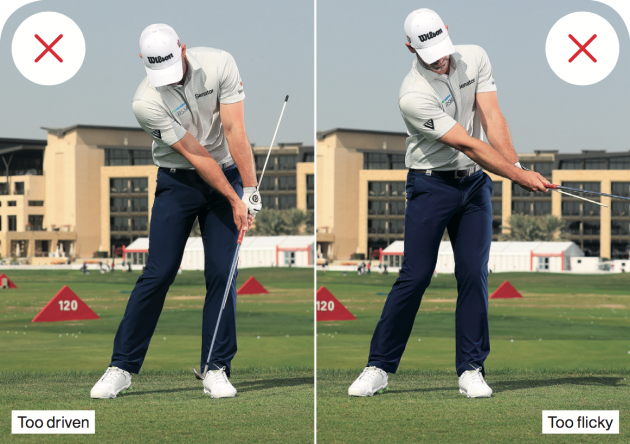
You can also see clearly whether you are guilty of driving at the ball too much, rather than releasing properly – if you are, the upper part of the stick will get too far away from your body through impact.
In an ideal world, as the club comes through the ball, you should see that the club, arm and shoulder all match through impact with the stick hidden behind them.
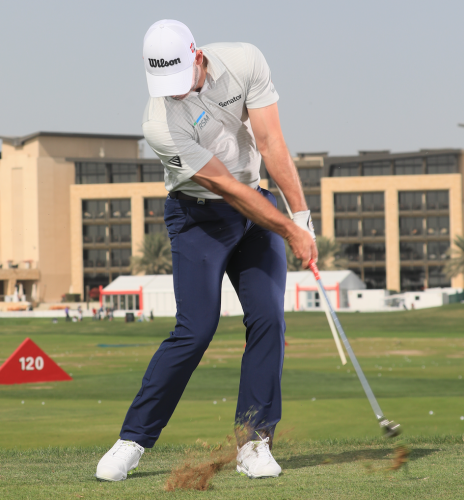
3. Miss the ball
Another great drill to practice delivering the club to the ball using a more downward angle of attack is to set a ball down about the length of the metal part of the shaft behind the one you are looking to hit. When you make your swing, your goal is simply to miss that second ball.
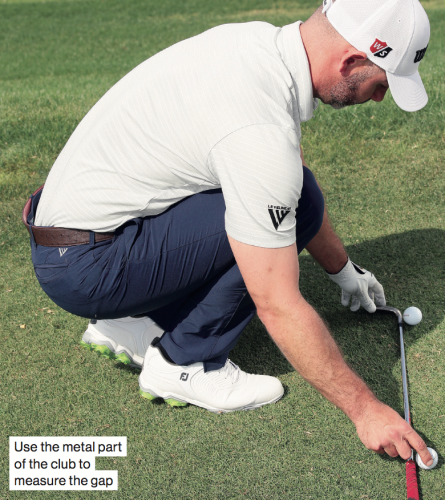
Don’t worry – you’re never going to hit it! This is used as a visual prompt that will help to develop a feeling of delivering the club on a downward path, as opposed to flicking or scooping it.
If you use these parameters, the tolerances are tight enough to work visually, but not so tight that you should ever make contact with the additional ball.

4. Two Tees
Here’s another drill that reinforces the need for a downward attack angle, and maybe one to progress on to after the ‘miss the ball’ drill, as we’re really into the nitty-gritty of iron striking here.
Place two tee pegs in the ground, one in front of the other, as demonstrated in the image below.
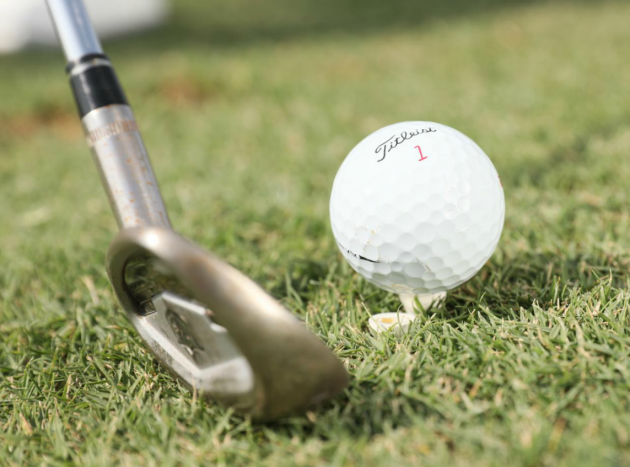
Now put your ball on the front one. Your goal is to leave the rear tee peg unscathed and get your divots starting beyond the front tee peg for the desired ball-then-turf contact you need.
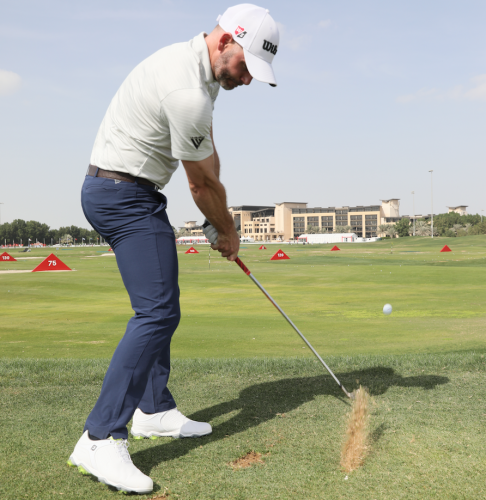
You may just clip the front tee or drive it into the ground a little if you get it right, but your divot will start beyond that. You can only achieve this by delivering the club on a downward angle of attack – any hint of hitting up and you’re likely to catch the rear tee peg with your club.
Want To Read More Expert Golf Tips?
Paul Waring's brilliant ball striking tips were first shared in the August 2019 issue of Golf Monthly Magazine, where he featured on the cover.
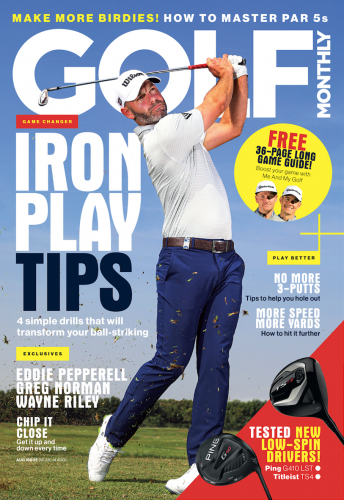
The Golf Monthly archive is a gold mine of brilliant reads, documenting a journey through the history of golf dating back to our first issue in 1911. Take advantage of over 100 years of invaluable tips from the best tour professionals and coaches in world golf, by subscribing to the online Golf Monthly Archive.

Baz joined Golf Monthly in January 2024, and now leads the instruction section across all platforms - including print and digital. Working closely with Golf Monthly's Top 50 Coaches, he aims to curate and share useful tips on every aspect of the game - helping amateurs of all abilities to play better golf. Baz also contributes weekly to the features section, sharing his thoughts on the game we love and the topics that matter most. A member at Sand Moor Golf Club in Leeds, he looks forward to getting out on the course at least once a week in the pursuit of a respectable handicap.
Baz is currently playing:
Driver: Benross Delta XT
3-Wood: Benross Delta XT
Hybrid: TaylorMade Stealth 4 Hybrid
Irons: Benross Delta XT 5-PW
Wedges: TaylorMade RAC 60, Callaway Jaws MD5 54
Putter: TaylorMade Spider Tour